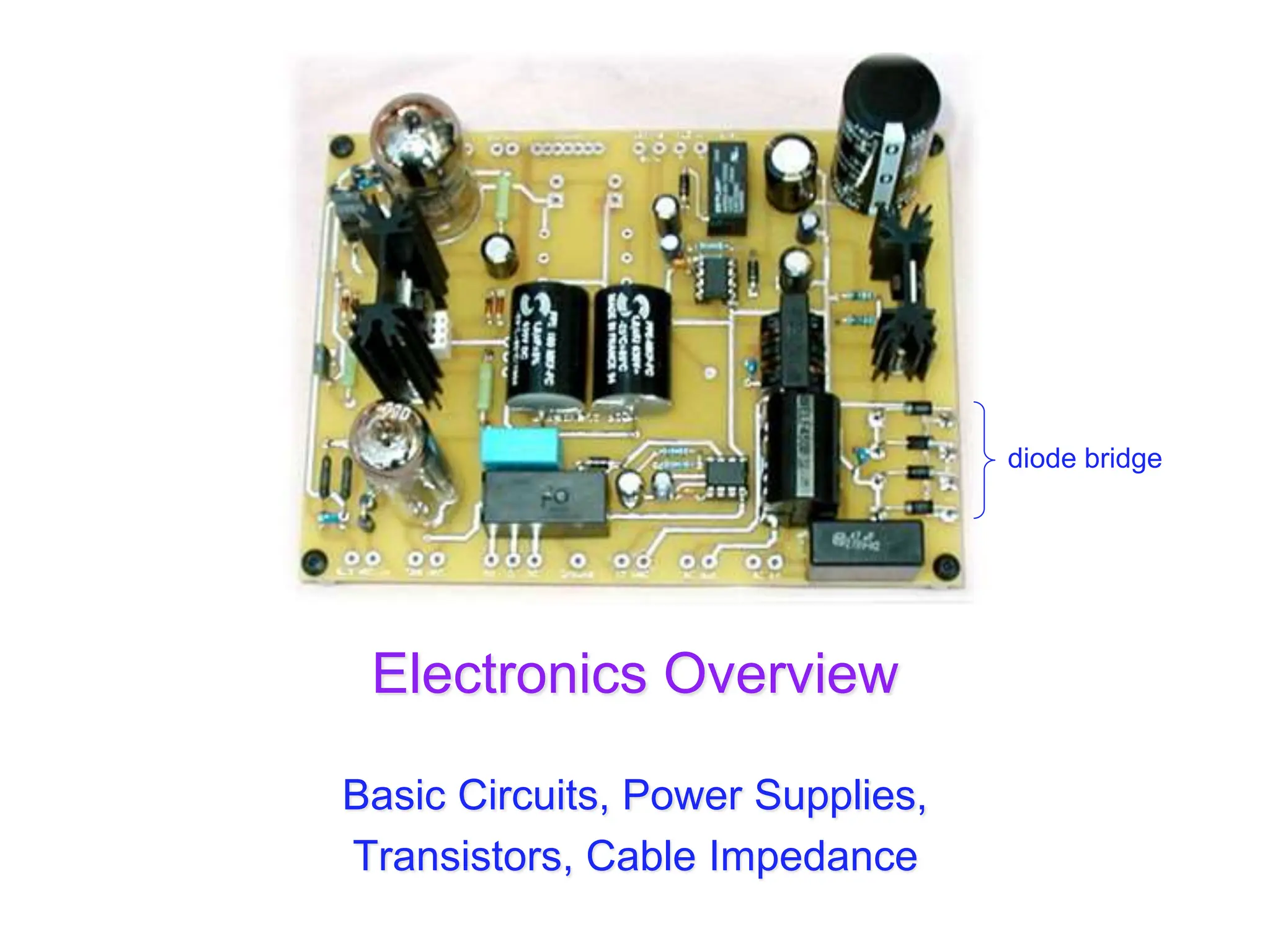This document provides an overview of basic electronics concepts including circuits, power supplies, transistors, and impedance. It discusses basic circuit analysis and relations involving voltage, current, resistance, capacitance, and inductance. Examples are given of voltage dividers, battery output impedance, full-wave rectification circuits, smoothing circuits using capacitors, zener diode voltage regulation, and transistor operation in amplification and switching modes.



































